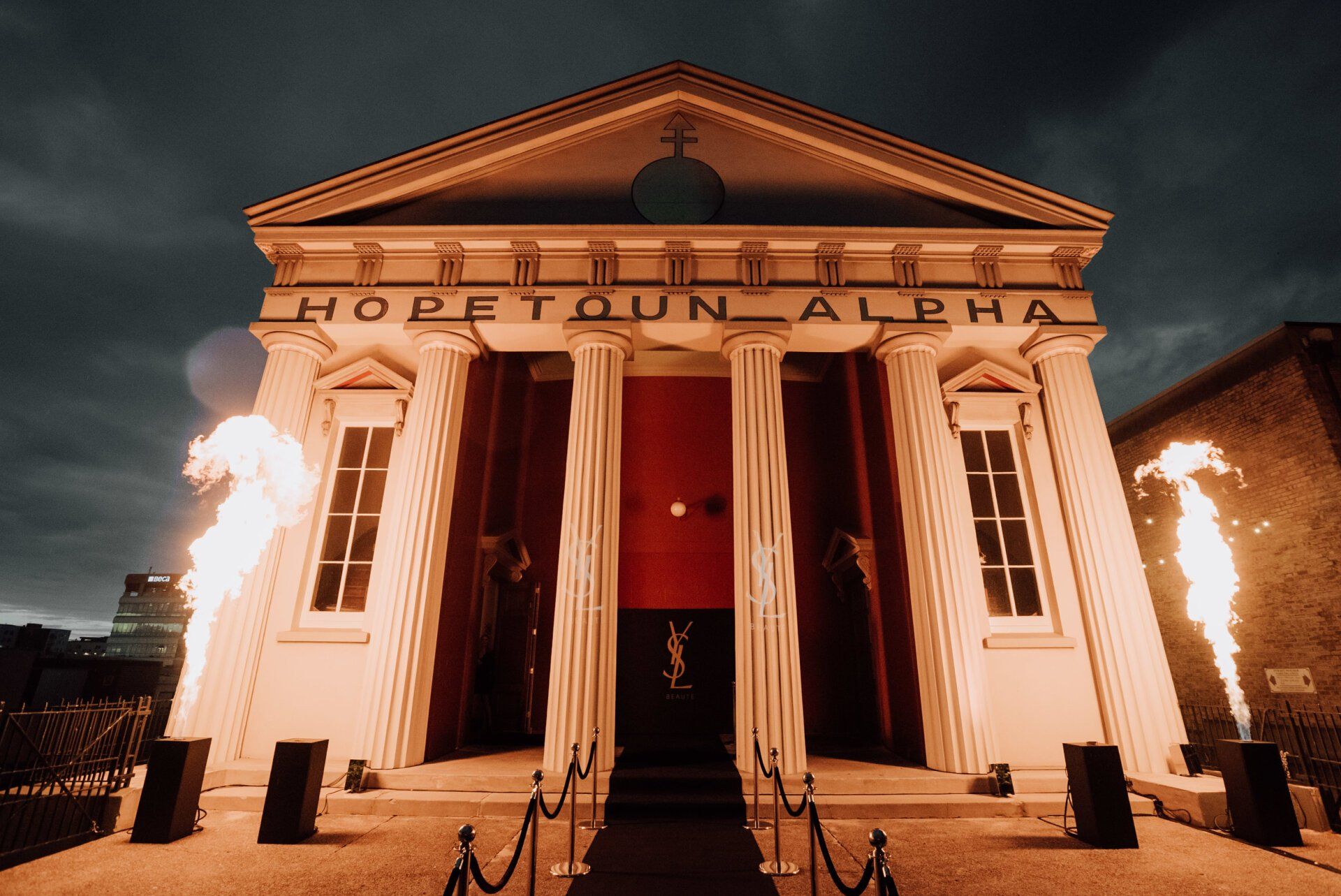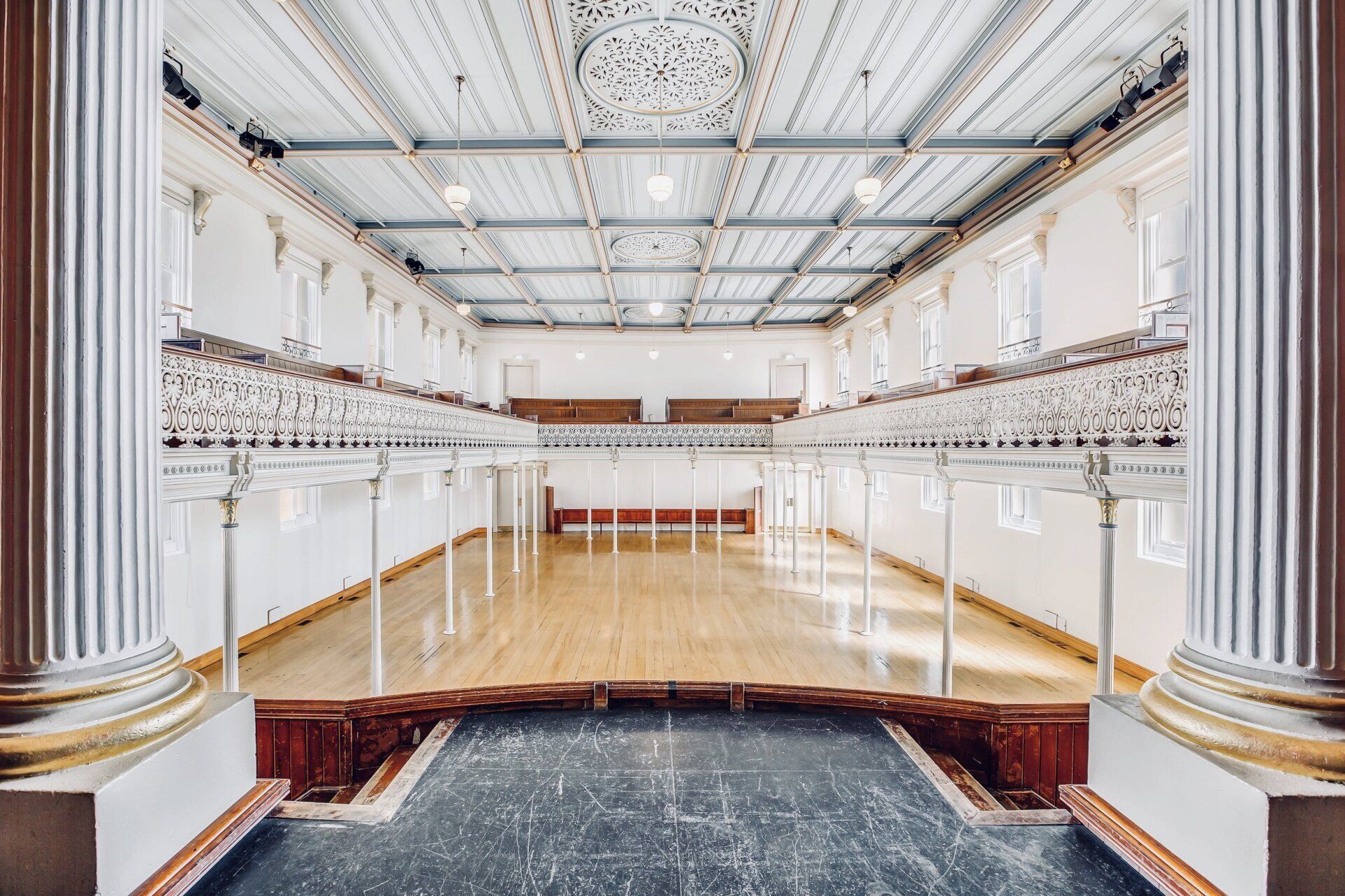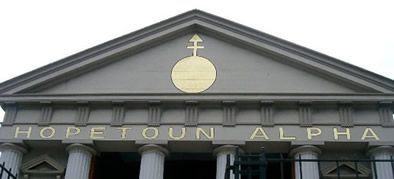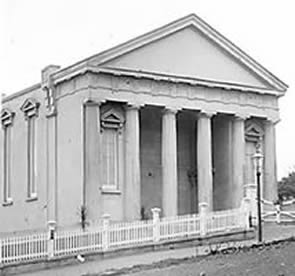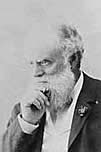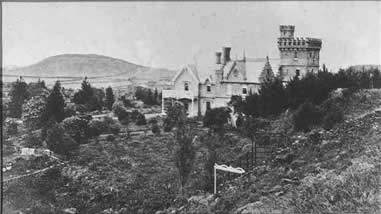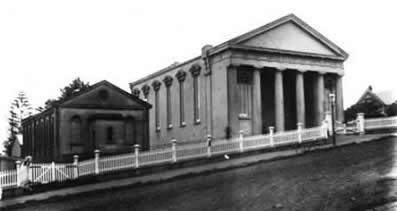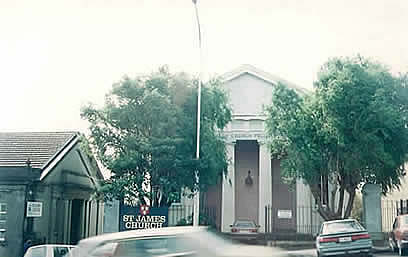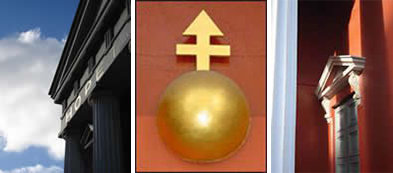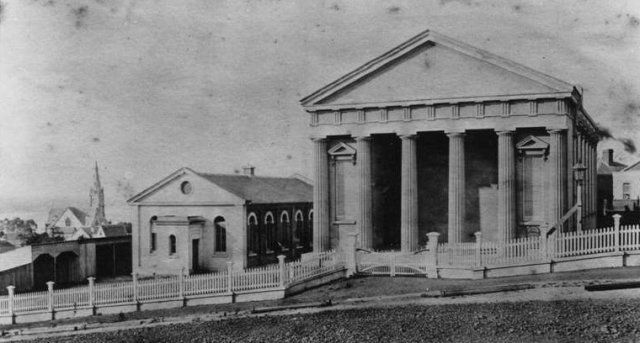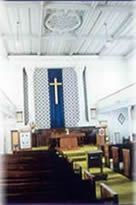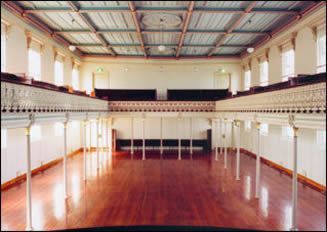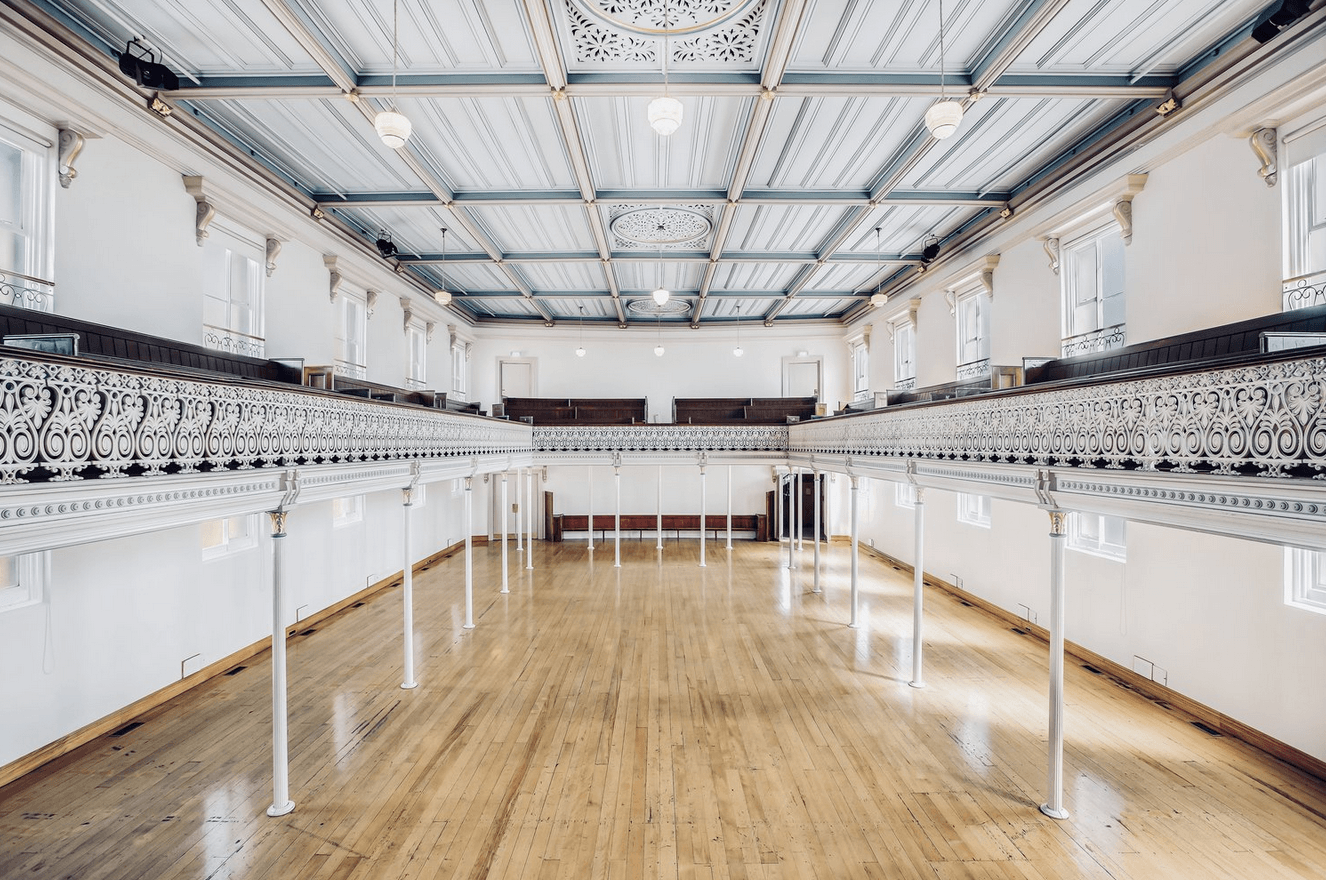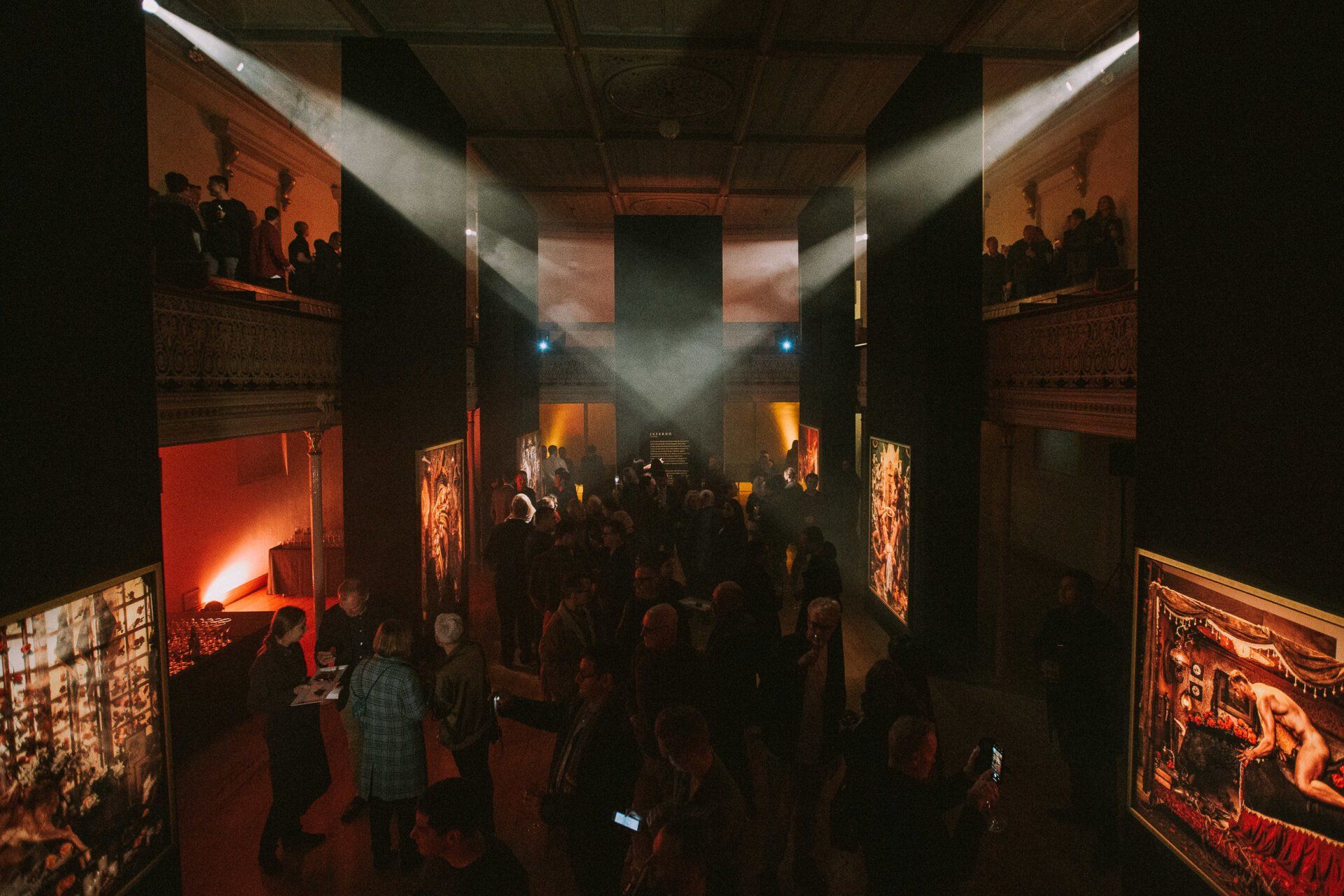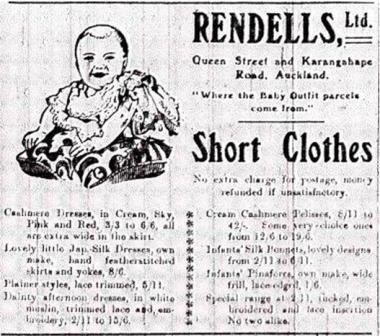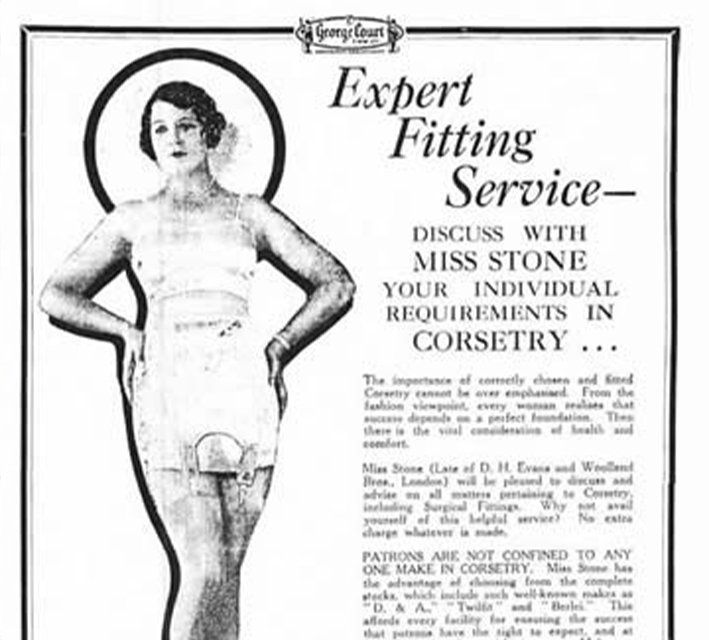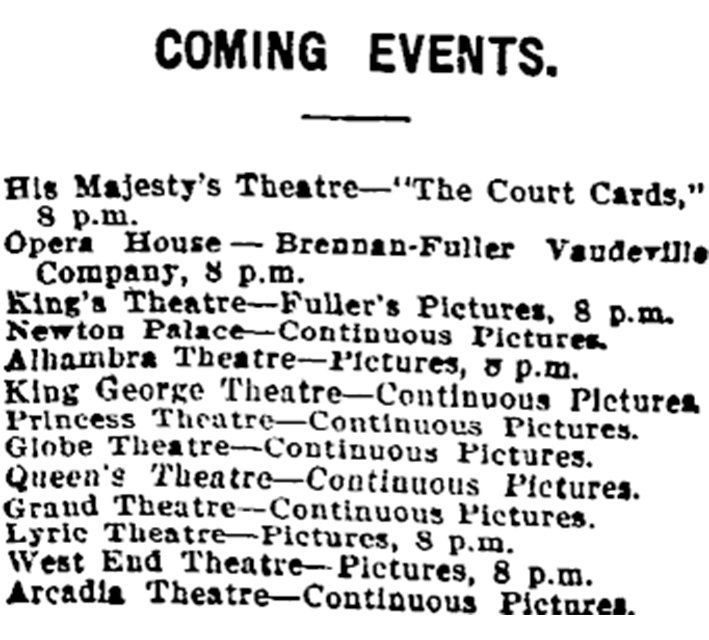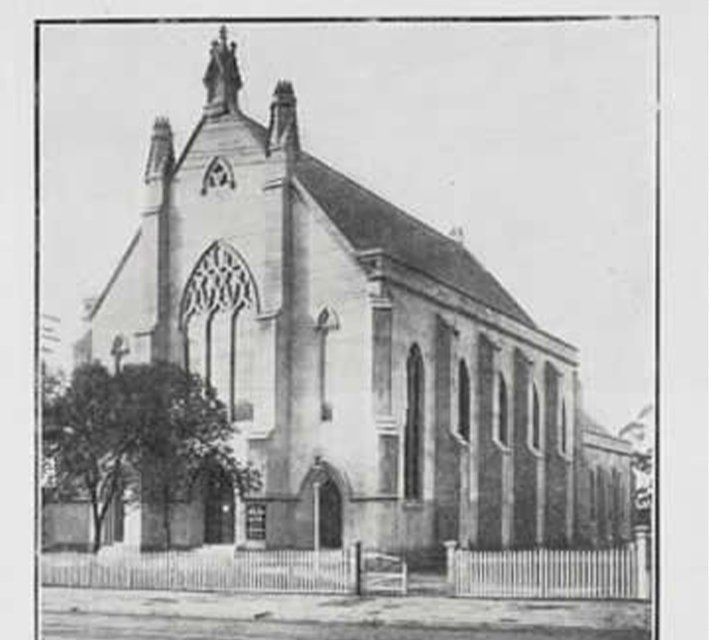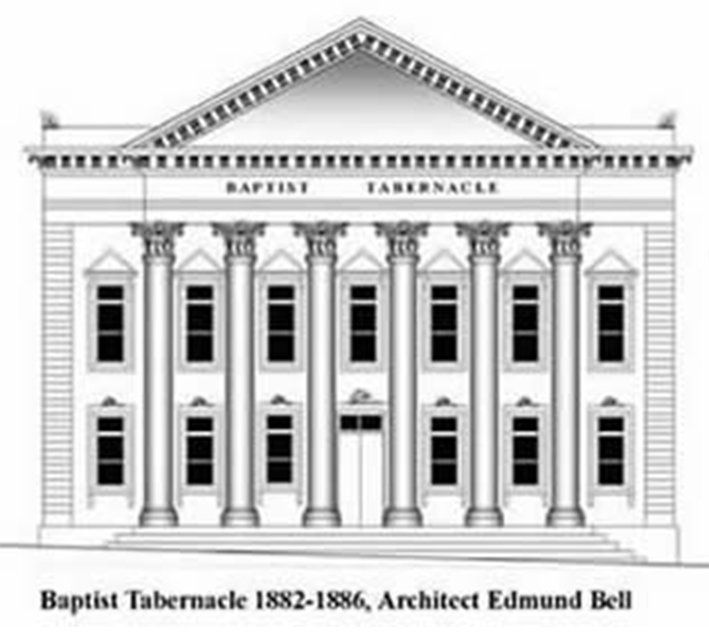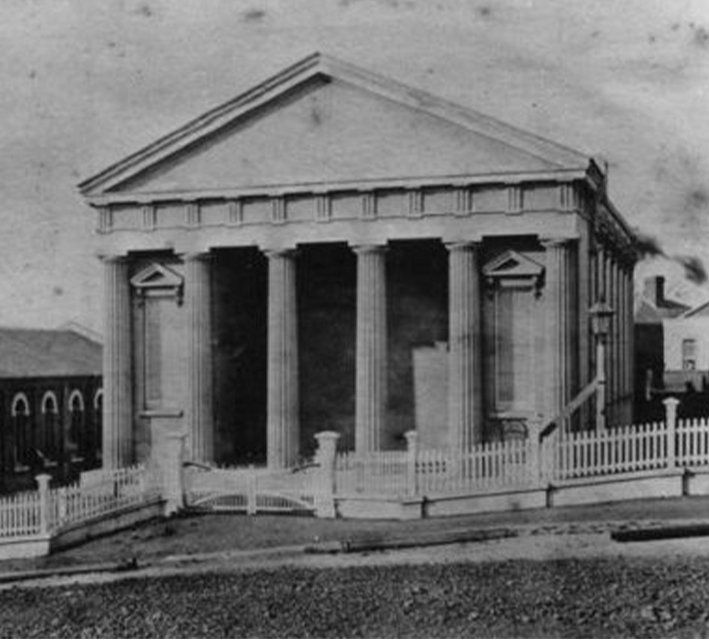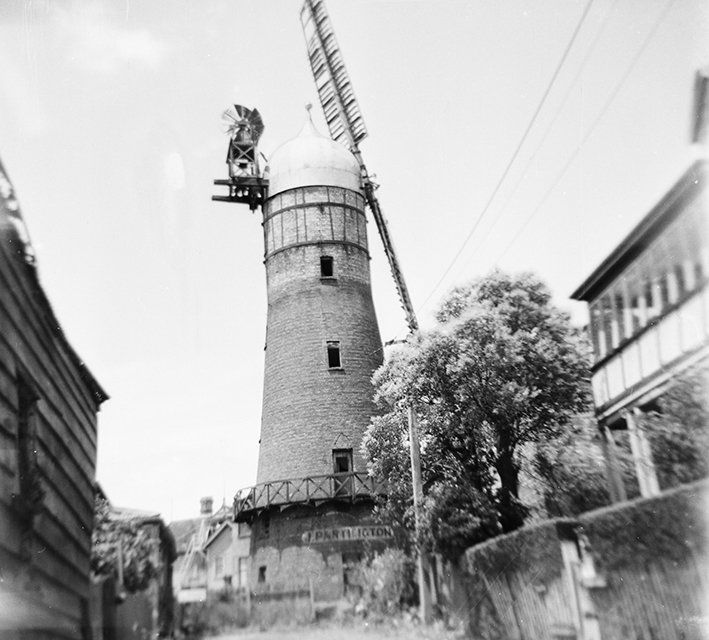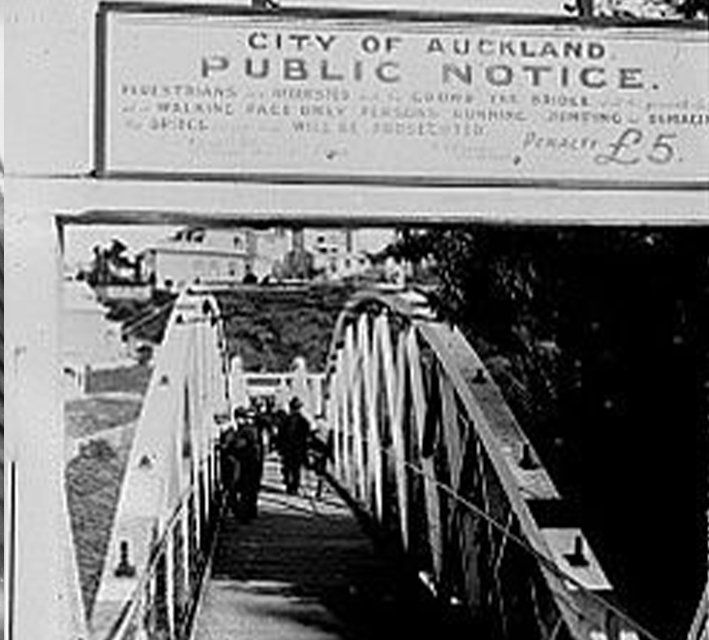This elegant Greek Doric building was designed for the Beresford street Congregationalist Independents by Philip Herepath, an architect who lived locally and who also designed the nearby Gothic style Pitt Street Methodist Church.
In 1840 the Reverend Barzillai Quaife was the first Congregational minister to settle in New Zealand, in the Bay of Islands. But the origins of Congregationalism in New Zealand are normally traced back to a Mr Jonas Woodward who commenced services in his home in Wellington in 1842.
The first Congregational Church at Auckland was formed in 1851, Dunedin in 1862 and Christchurch in 1864. In the 1870 the movement in Auckland had grown to require a separate building in the upper part of the city. At the time many churches were replacing their wooden buildings with brick or masonry structures. These were obviously more prestigious but also much more expensive.
The Beresford Street Independents initially wanted a masonry building but cost restraints allowed the proposal of a radical new building material to be considered. This material was poured concrete.
The use of concrete was very adventurous but the resulting building has proved quite successful - it did not include metal reinforcing the use of which was only developed after 1900.
The new Concrete Church
“The new church is one of the most suitable and handsome of its kind in the city. The movement for its erection commenced some fifteen months ago, when, upon the recommendation of Mr J C Firth it was decided to use concrete as the material, as was used in building the dwelling-house of Dr. J L Campbell, and that of Mr Firth. The material is formed of six parts of scoria ash and one of Portland cement, mixed to a proper degree of consistency. This material is easily moulded, and, when hardened by exposure to the air becomes as hard as stone, and of great strength and durability. Its surface may be rendered smoother than chiselled stone, and its appearance is superior to any of the ordinary kinds of building stone." the SOUTHERN CROSS newspaper.
Josiah Firth
Josiah Firth was prominent member of the congregation. He was a prominent land owner and flour miller, as well as being a member of the Provincial Council.
Firth is noted for building two concrete castles; one in Mount Eden called Clifton House and one at Matamata where Firth had considerable land holdings (he was nicknamed “the Duke of Matamata") His early interest in Concrete led his sons to found Firth Concrete, a company still in operation. Captain William C Daldy was also involved in the project and was a major contributor in financing the construction.
Clifton House - Josiah Firth's Concrete Castle in Mt Eden.
A number of experimental cast concrete structures were built in the 1870s, constructed of solid concrete with no metal reinforcing (a development of the 1890s). Most of the very early buildings have not survived more due to later redevelopment than any structural shortcomings - the first such building in Auckland appears to have been a wing added to Loganbank (Dr John Logan Campbell's residence in Symonds Street - now demolished).
Firth's recommendation of the use of concrete for this Church means this probably one of the earliest surviving poured concrete buildings in New Zealand.
The country's oldest surviving concrete building is a farmhouse built in 1862 near Mosgiel by John Gow, now owned by the University of Otago. The next oldest Building is Hopetoun Alpha 1875, followed by Josiah Firth's extension to his house in Mount Eden, Clifton House 1876 - now usually referred to as Firth Castle. History of Concrete in New Zealand
The Beresford St Church with the later church hall to the left
The Congregationalists were an austere Protestant denomination and the choice of the Greek revival style was possibly a symbol of their return to the fundamentals of the Early or “Primitive" Christian church. The New Testament was written in Greek and that was probably the language which Christ and his disciples spoke to each other in as they came from several different nationalities. Thus this building can be read as a symbolic manifestation of the early 'Primative' Church before it was altered by the superstition of the Middle Ages and what was perceived as the corruption of the Catholic Church - this was a contributing reason for a number of austere Protestant Churches building in one of the Classical styles than the medieval Gothic Style. The austerity extended to the absence of extraneous decorative details; unlike many churches which are resplendant in figurative and colourful stained glass the windows here are glazed in plain frosted glass in subdued tones. The interior has very little decoration, the original layout included no fixed Altar, with the pulpit and lectern taking precedence - this showed the the word of god was more important than mere ritual.
Plan of the Church with Beresford Street to the right
Note the curved wall which amplified sound, resulting in very good acoustics for this building.
St James Church circa 1985 with the church hall to the left.
THE HOPETOUN ALPHA NAME AND SYMBOL
The name Hopetoun is derived from the adjacent Hopetoun Street which is a location in Scotland. Literally translated “Hopetoun" means “Town of Hope".
This name Hopetoun Alpha was chosen because what was trying to be created on this site was a centre, a miniature town of hope and positivity, a “Life Centre" for the future, while acknowledging its beginning as a historic church without being an overtly religious name.
Alpha is the Greek work for beginning which together with Hopetoun fits well with the objectives - new beginnings with hope and positivity.
The symbol: The circle represents the earth, universality - the globe - our home, the cross symbolises a blend of female and male and the arrow is our forward and upward direction as we all move into a brave new future as one.
Up to 2021, the venue Hopetoun Alpha was one of Auckland's most prestigious venues hosting a wide range of events.
THE OPENING: MARCH 19TH 1875
The Church & Hall with St James' Presbyterian Church on Wellington Street in the background. Auckland Museum PH-NEG-C24044.
The opening of the church is described in the 'Southern Cross', 19 March 1876. “Three hundred people attended the ceremony led by Sir George Grey and the pastor, the Rev J W Davies".
Sir George Grey was, at the time, Superintendent of the Auckland Province and Member of Parliament for Auckland West (which included Newton), the following year he became Prime Minister.
Sir George Grey MP. Other people associated with the church included George Fowlds [Minister of Education]; J Berry [Editor of the NZ Herald]; H N Warner [Commissioner of Crown Lands for Auckland]; C E Burton [Judge of the Supreme Court] and the Rev Thomas Hamer. Hamer had led a successful revolt against the proposal in the Provincial Council in 1854 that the salary of Bishop Selwyn should be paid out of public funds. The church was noted for its excellent acoustics and seated 850 people, although at this period it did not have the gallery structure which was added in the 1880s. Next to the church was constructed a church hall and further off in Hopetoun Street a residence for the Minister. The 1902 volume of the Cyclopedia of New Zealand, described the church as “one of the prettiest places of worship in the Colony."
The Congregationalist movement had undergone a big period of expansion during the 19th century but the new century saw a period of consolidation and then decline. This was partially due to changes in society as younger people were less likely to be attracted by old fashioned religions - including the strict "Puritan" lifestyle ostensibly endorsed by the Congregational movement.
Another factor was the redistribution of population - the spread of suburbia combined with a rise in car ownership meant places of worship in the suburbs drew people away from older locations. All inner city places of worship saw a decline in the numbers of attendees as suburban churches grew in size - declining attendances meant a subsequent drop in revenue.
By the 1920s a number of the older churches in the city were experiencing trouble - especially as they were now requiring more maintenance. Amongst the churches no longer seen as being viable was the Beresford Street Church. In August 1922, a meeting of the congregation presided over by Rev Frederic Warner, voted to close the church and sell the property. However the sudden death of Warner led to the appointment of an enthusiastic young minister from Australia, Lionel B Fletcher, who was to turn things around.
FIRST RADIO CHURCH SERVICE
Rev Lionel B Fletcher
Lionel Bale Fletcher (1877-1954) was an extremely personable young man who had a good touch with the wider community outside his own denomination.
His father and six brothers were also protestant clergymen (either Methodist or Congregationalist).
From 1909 to 1915, he pastored in Port Adelaide where his predecessor was Rev. Joseph Coles Kirby. From 1916 to 1922 he was the minister at Wood Street church in Cardiff, Walesfrom 1916 to 1922. From 1922 to 1923 he led the 'New Life Campaign' in Britain from 1922 to 1923.
He seems to have been very popular with younger people and children in particular. He was such a popular preacher that the Church actually needed to forsake their own church and hire the Majestic Cinema on Queen St to accommodate the enormous crowds attending his sermons.
He also became the first Minister to Broadcast Church Services in New Zealand when the first church service to be broadcast live across New Zealand was from Hopetoun Alpha in 1925.
Fletcher was a frequent broadcaster, popular with women and children and used the name 'Uncle Leo' when talking to children. According to Charles Malcolm, Fletcher's biographer, there were — conservatively estimated — over 250,000 professed conversions under Fletcher's ministeries in Australia, Britain, New Zealand and South Africa (1934 & 1936).
He was minister at Bersford Street from 1923 to 1932.
He was married to Maud Harris Basham who seems not to have been related to Maud Ruby Basham (Aunt Daisy) another Auckland Radio personality of the same period.
Post War Decline
Like most of the other religions the Congregationist Church experienced a decline in the period after the second war. Beresford Street Church certainly saw its congregation shrink in size during the 1950s and 1960s.
The Congregationalists had broken away from the Presbyterian Church in the early 15th century but by the mid 20th century their differences seemed less irreconcilable and worldwide there was much intermingling of the two churches.
In 1965 the nearby Presbyterian St James Church in Union Street burnt down and the two congregations combined.
The Beresford Street Church was renamed St James at this time (creating confusion for some people - any reference to St James' from before 1966 is not the Beresford Street building). In 1966 several of the Congregationalist churches in New Zealand were reabsorbed into the Presbyterian Church but some remain as the Congregationalist Union of NZ.
Throughout the 1960s and 70s the Church got more involved in outreach programmes to the poor and needy and a community centre was established in the buildings on the Beresford Street Site.
The interior in the 1980s.
In the late 1960s however came a crisis from an unexpected quarter.
Because of the construction of the Auckland motorway system in the 1960s the population of inner city Auckland, especially Freemans Bay dropped dramatically.
The Beresford Street Congregationalist Church was one of several churches in the area to experience hardship from dealing with an ageing building and a dwindling number of members. The Beresford Street building was over a hundred years old and in need of many repairs. The expense of earthquake strengthening in particular was beyond the ability of the congregation. Eventually the decision to relocate was made in the early 1990s and the building put up for sale.
THE ASTON WYLIE TRUST
The building had no heritage protection at this time so it was very fortunate that Ashton Wylie purchased the building in 1994 with a view to preserving it.
The Aston Wylie Trust proceeded to renovate this unique and stunning architectural building to an exceptionally high standard.
The building now has a Grade 1 rating from the New Zealand Historic Places Trust and is scheduled A by the Auckland City Council which ensures it the highest grade of protection available.
Possibly the best Neo-Classical room in the country
The excellent acoustics and elegant design of Hopetoun Alpha means it is very popular for events such as concerts and weddings, as well as product launches, prize givings , lectures and theatre performances.
Subscribe to the
Karangahape Road newsletter...
NEWSLETTER
Thank you for signing up for our newsletters.
Please try again later.
Karangahape Road Business Association © All Rights Reserved 2020
Made by Monster Valley & This Needs Doing
AUCKLAND TRANSPORT JOURNEY PLANNER:
Find out your best route to Karangahape Road by bus, ferry or train.


